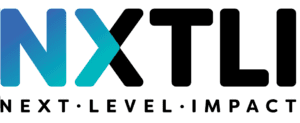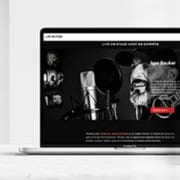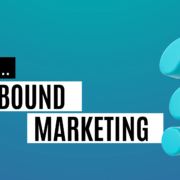The 9 essential building blocks of your Content Marketing Strategy
Many marketing managers and business owners experience a challenge in properly aligning and integrating content marketing activities throughout the business. As a result, the marketing team is often very busy developing and publishing content, but lacks clear business results. That x number of posts have been posted on socials and some growth in followers has been achieved is - especially in this severe corona crisis - no longer enough. It is essential to have a content marketing strategy that really makes a difference and clearly contributes to business results!
In the more than 10 years that I have now been involved in content marketing, I have developed the Content Impact Model through trial and error. This model is a structure with 9 building blocks that to me are indispensable to develop a successful content marketing strategy that properly integrates all parts of the organization. In this article, I share these building blocks that will help you develop and execute a content strategy that truly makes an impact.
Content Marketing, what do we mean by that?
In case you're not very familiar with the term "content marketing," let's first briefly review what we mean by it. This term was created around 2010 by American Joe Pulizzi. He is considered the "godfather" of content marketing and is the founder of Content Marketing Institute and Content Marketing World.
Joe describes content marketing as follows:
"Content marketing is a strategic marketing approach focused on creating and distributing valuable, relevant, and consistent content to attract and retain a clearly-defined audience - and, ultimately, to drive profitable customer action."
So content marketing goes far beyond some posts on social media for some awareness, promotion and sales. It is a strategic marketing approach to really build a valuable relationship with your audience that ultimately creates a profitable business model.
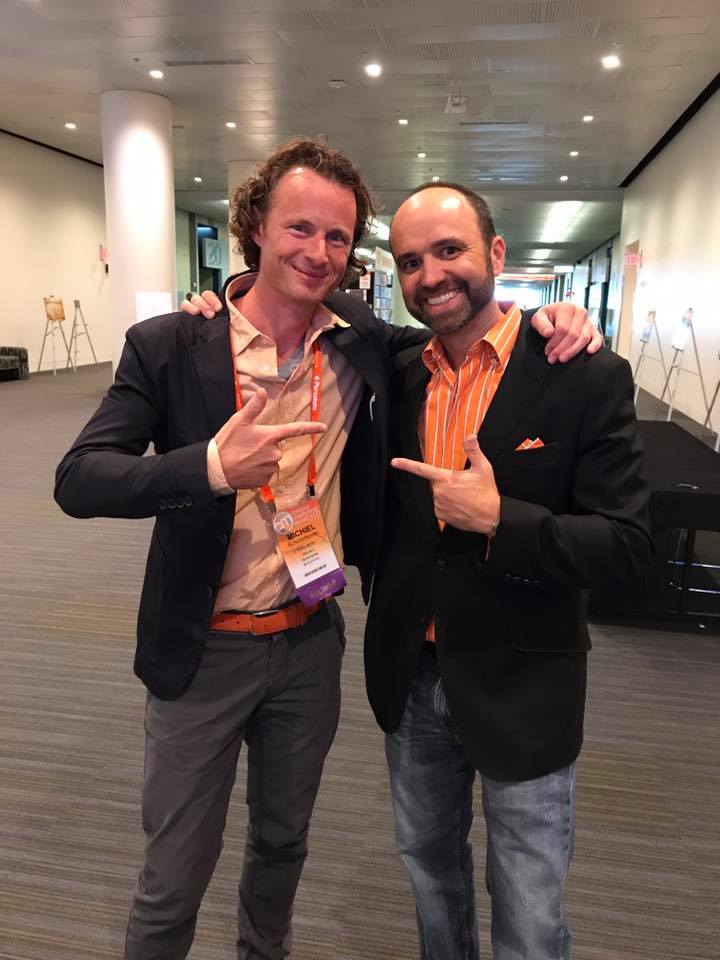
The 9 building blocks of the Content Impact Model
As content marketers, we often dive into execution mode very quickly. 'We need a post for Facebook, Instagram . 2 blogs... and oh yeah we also have a LinkedIn and Twitter channel where we need to post. And we have a target of 3-5 posts in the week, so hup to work'. Such a situation is a daily occurrence in many organizations. Recognizable?
During the implementation process, all sorts of questions also often arise such as "Who exactly do we want to reach with this post, what is the best time to post, what do we want to achieve with it?
I find that many organizations lack a clear strategic framework. Many puzzle pieces are present, but the puzzle has not yet been put together. This requires a good structure that connects the puzzle pieces all together.
In my search for the most complete and workable structure, I defined 9 blocks and connected them into a model. I renamed this model the Content Impact Model, the model that allows you to do content marketing that has real impact!
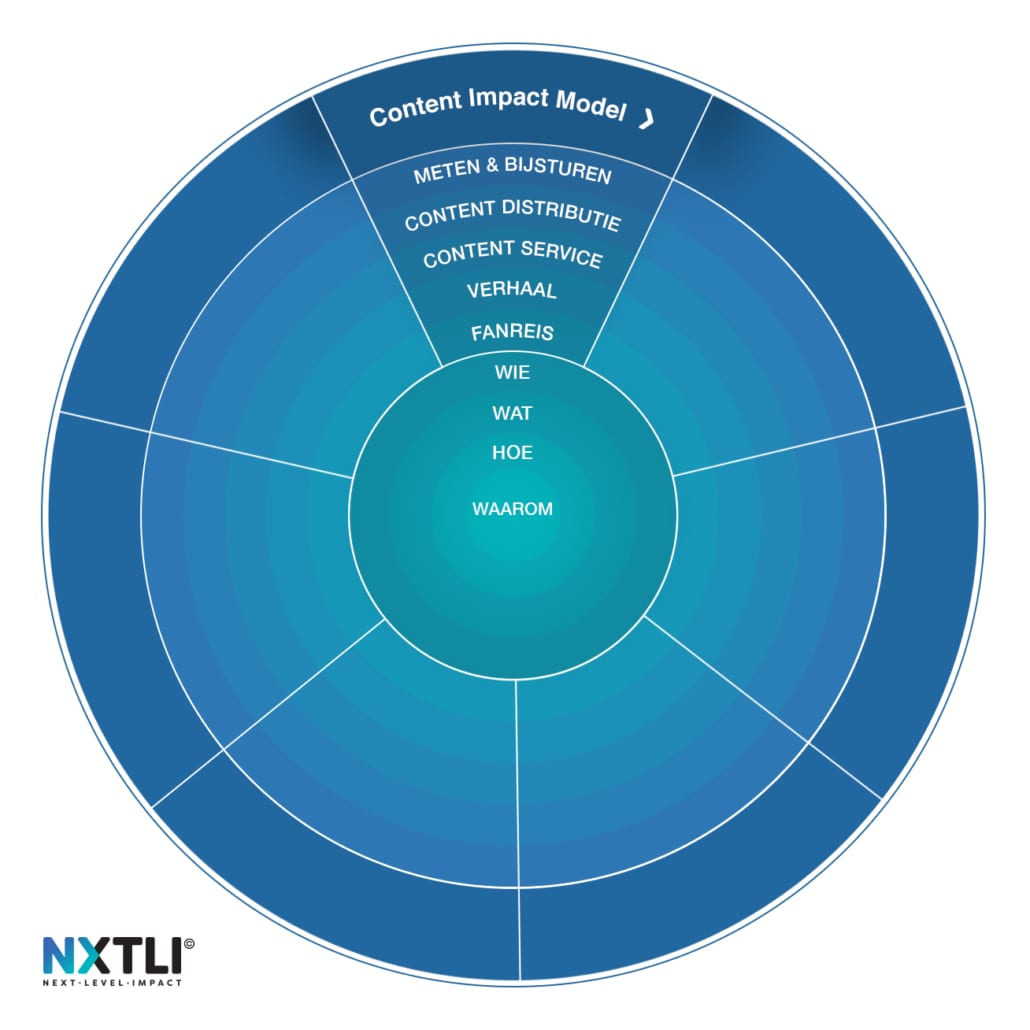
1. The "Why?
What is the higher purpose of your business?
This first building block is the long-term direction where you want to go as an organization, your compass. This is not about a certain market share, profit or financial value of your organization, but about your organization's right to exist. Why do you really matter and what is the result of the added value you ultimately want to achieve for people or society. This is deeply rooted in the intrinsic motivation why the founder started the company. And people who work for the company if all goes well get out of bed every day for it!
2. The "How.
How will you realize your higher purpose?
Once your higher purpose is clear, you can begin to determine what it will take to actually start reaching your goal. In what short- and long-term steps do you want to achieve your goal? What does your organization look like? How do you work together? How do you serve your audience? In what ways do you really want to add value? What is your company's philosophy?
Suppose your higher goal is to reach Mount Everest. Then your "How" describes what it takes to go about achieving it. Materials, preparations, team, cooperation, etc..
3. The "What.
What products, services, services and/or experiences do you deliver in a certain way (how) to start achieving your higher purpose (why)? Also, are these "propositions" all clear? Is it clear what value it adds for your audience and what it brings to yourself? In what way does it contribute to achieving your higher purpose?
Perhaps these three building blocks look familiar to you. They correspond to the well-known 'Golden Circle' of Simon Sinek. As far as I am concerned, these blocks are also the heart of your organization, the starting points to work from and to further develop your organization. In these 3 building blocks we lay the foundation for the necessary content culture and organization.
In the next building block, we connect your audience to that.
4. The "Who.
Who is your audience that is interested in the products, services, services and/or experiences you provide in some way to start achieving a higher goal? What matching characteristics do people have that you are relevant to? The pitfall is often: wanting to appeal to everyone. Define a clearly identifiable group of people with similar characteristics (your "audience," "persona" or "target group"). The more specific and smaller this group of people is, the better you have defined 'your niche'. Dare to choose very clearly and become super relevant to that group of people.
These first four building blocks form your positioning (why, how, what and who). With these you can position your organization from the higher goal very powerfully and distinctively and align all marketing and communication expressions with this. If the positioning is clear, unambiguous and distinctive, you have a solid basis for the following building blocks.
You can now create a clear positioning statement. To do this, use the following structure:
I / we ...... (describe what you deliver, your 'what')
To ...... (your audience, your 'who')
By / in the following way ........ (how you deliver 'what' to your audience. Your 'How')
Because I/we...... (your why)
You can then incorporate the above into a concise positioning statement.
5. The Fan Trip
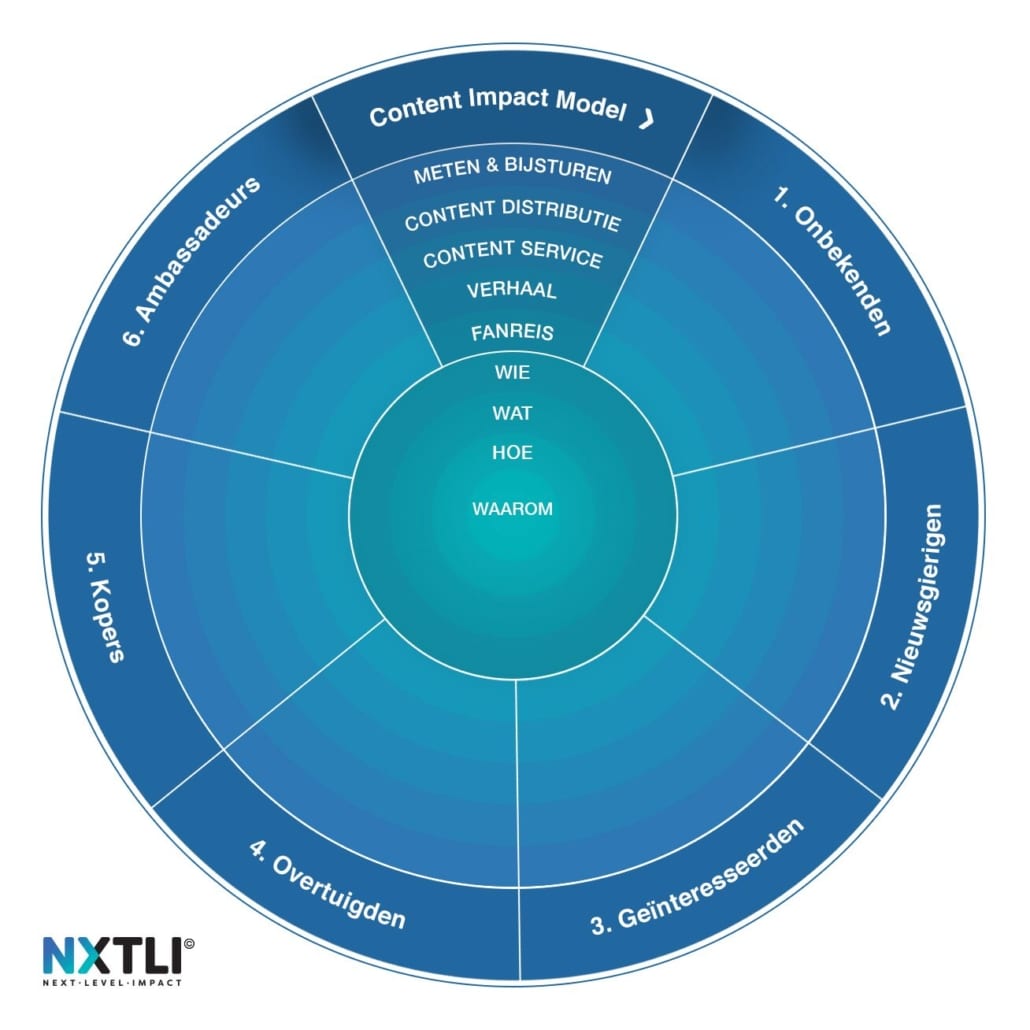
What stages does someone go through from not knowing you at all to someone being your biggest fan, your ambassador? To work this out properly, it is very important that you know your audience very well. What information does someone need at what point in the fan journey? What questions do people ask themselves to eventually come to a decision related to what you offer? How does someone search for these answers, which search terms are used? Good luck with selling your products through your Facebook page.
6. Your story
What story are you telling? What real, honest and relevant stories do you tell during the different stages of the fan journey so that they match the needs of your audience? What answers do you give to the questions people ask during the fan journey?
7. Content service
What forms of content do you create to tell your stories? Are there content themes, different content types? Is there a content style guide? Is there a schedule for developing content?
8. Content distribution
How do you distribute content? What distribution channels do you use to distribute your content? How do you deploy them and what is the goal for each distribution channel? How do you use marketing automation to make distribution more effective? Which channels perform well and not so well? Which channels are relevant to your audience at what stage of the fan journey and how are you performing there?
9. Measuring and adjusting
How do you measure performance and make adjustments? It is difficult to answer the above questions if you do not measure the performance of your content and distribution channels properly. Define your goals very specifically so that they can be measured. That way you can make timely adjustments. How do you organize the tracking of your content? How do you store important data to make it actionable? What are the objectives per step in the fan journey, what are the conversions and how do you measure them? How do you make the analyses insightful and report them? There is still a world to be won here.
Build your content marketing foundation
You can use these 9 building blocks to develop a successful content marketing strategy. Make sure all the puzzle pieces are complete and well laid. Then you will have a solid foundation to take the next steps with your content marketing activities. And to start accelerating in the digital landscape.
Want to know how your organization is doing digitally and how you can accelerate? We'd be happy to do a Quick Scan for you.
Do you have questions about improving your content marketing results? Ask them via chat or email and we'll be happy to help. You can also call me at 06-43046468 to exchange thoughts on this.
Want to know more about real-world results?
Read 'How Chickslovefood achieved 50% growth'
Read 'Scantraxx prevents steering by gut feeling'
